We use cookies to make your experience better. To comply with the new e-Privacy directive, we need to ask for your consent to set the cookies. Learn more.
How to Lay Your Own Lawn: All You’ll Ever Need to Know
Our latest guide takes your through from start to finish how to lay your own lawn - step by step!
How to Lay Your Own Lawn - Step by Step
In , his famous poem Song of Myself, celebrated American author Walt Whitman describes grass as “the flag of my disposition, out of hopeful green stuff woven”. No doubt about it, a beautifully laid lawn is a thing of beauty in and of itself – yet laying one with your own bare hands may appear rather daunting to those who feel they don’t exactly have a green thumb. Now, as is the case with most DYI projects that target your home and garden, you can approach laying your own lawn in two different ways: a) You can freak out about it all – the costs, the hard work, the time, and energy it requires, etc.; or, b) You can create a plan, complete with a checklist and timeline – and get down and dirty with it. For the sake of your sanity, and also because we believe well-manicured turf greatly improves curb appeal, we’re going to steer you toward that second option.
That’s why we’ve created a complete guide on how to lay your own lawn, which will give you at least a rough idea about what you can expect. The article tackles issues of when and how to go about creating a perfect lawn yourself, explains gardening material choices, and provides a walkthrough of all the steps you need to take, in order to come out at the other end with the best possible lawn you could hope for. So, without further ado, let’s get right down to business – this is how you lay your own lawn, starting with the soil preparation stage and right up to the lawn aftercare part of the project.
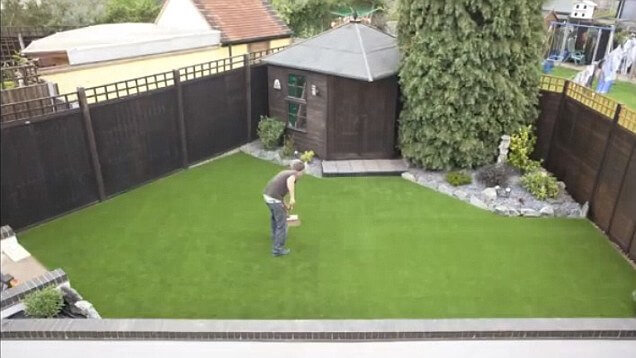
Perfect timing: When to lay a lawn
Most experts will agree that autumn is the best season to lay your own lawn. That’s because the soil is still warm after the summer, but it’s also moist from the typical rainfall that autumn brings along. Furthermore, new grass is stimulated to grow during the wintertime, which is exactly what you will want to see: a fresh, lush lawn waiting for you at the other end of the cold season. You can also lay your own lawn in spring, but bear in mind that several areas in the UK have a hosepipe ban in effect in spring. New turf needs to be watered often, so as to avoid excessive stress.
Depending on the season you select, it’s important to know how much time you have at your disposal for actually rolling out the turf. In autumn or winter (if you’re so inclined, as to create your lawn in the coldest season), you only have about 24 hours to take care of things, once the turf has been delivered. In the summertime, turf needs to be rolled out immediately, as the high temperatures and lower humidity levels can make the grass far more susceptible to turning yellow and/or drying out.
Project ‘Lay Your Own Lawn’
Decisions, decisions: Choice of lawn supplies
Before we provide some actual pricing plans, you need to be aware of the fact that prices for turf and professional lawn installation can vary widely and, as one homeowner puts it, “can be very erratic”. Professional landscapers can charge anywhere between £2-300 and £3-4,000 and, in England, you may have to pay more to have a lawn installed in the South East than in the Northern areas. At the same time, the prices for the rolls of turf itself can go from £.5 to £3-4 per square metre, depending both on where you live (it seems that the further up north you go, the more expensive grass becomes), as well as on the quality of the grass itself. As for landscaper quotes, should you decide not to lay the lawn yourself, you need to figure out what you want the technicians to do for you.
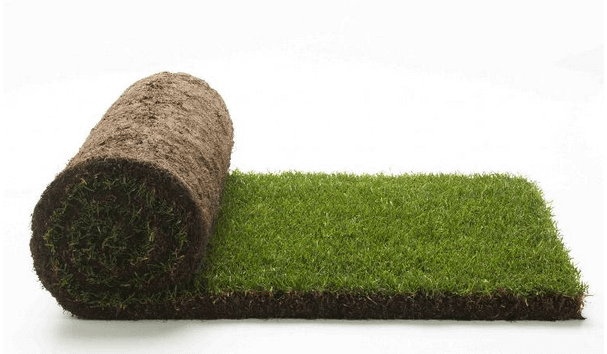
All of the services below are charged for, and can drive your final bill to sky high levels:
- Weeding and fertilization;
- Soil preparation: levelling, flattening, and rolling the ground;
- Actually laying the turf;
Simply providing the turf. Most contractors will charge you for this, as they provide the service of helping you select the species of grass that would be best suited for your soil type, local climate conditions, and landscaping project budget.
As you may have already guessed, laying your own lawn is always the most affordable option. Of course, if your garden is in very poor shape and requires a lot of preparation beforehand, for instance, you might decide that the energy and time investment is simply not worth the effort. However, if you think it’s feasible to take care of that aspect yourself, rent out a JCB and take care of the work. Here are the aspects you need to bear in mind, when it comes to the logistics details of your undertaking:
Buying the turf
- A typical piece of turf roughly covers one square meter. Don’t be bothered with turf rolls that come in smaller pieces (about .5 sq. m).
- Good suppliers will deliver right to your doorstep. As with anything, do some online window-shopping before you buy. Read the reviews. Check out the forums. Make sure you’re giving out your hard-earned cash to a company that deserves it.
- The best turf and topsoil types have withstood the test of time. When it comes to turf quality, you will want to buy the best: grass grown from seeds. Another thing to watch out for is the density of the grass, plus how easy it is to manoeuver. Opt for dense, yet light turf. Also, choose topsoil that has been monitored for performance, with a high fertility rate.
- Consider your grass species options. Like anything, turf, too, is available in several grades, each of which is suited for a different situation. Dwarf perennial ryegrass, for instance, is drought-resistant, while fescue and bent are perfect for that impeccably manicured ‘Garden of the Year’ contest in your neighbourhood – but they are also more sensitive to weather conditions.
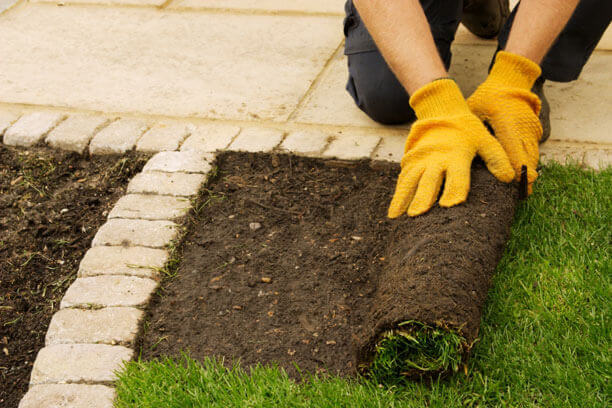
- Keep the turf moist. Especially if you live in an area with low levels of rainfall, you will want to make sure that the grass is stashed away in a shady place, where you will occasionally also want to water it.
- Get to work quickly. As back-breaking as the work of actually laying the lawn may seem, try to get to it as soon as possible. It’s best not to wait for longer than a day after delivery to start laying out the rolls of turf.
- Yellow is not irreversible. Should you wait for a few more days before actually laying the lawn, you might find that the grass has developed several yellow-ish spots. Water the rolls after you’ve opened them; in most cases, the grass will turn green again, once you’ve rolled it out.
Costs: typically around £2-3/1 sq. m of turf + £6-70/bag of topsoil. For an accurate cost estimate, you need to carefully measure the surface of the area you plan on covering with grass. The average garden requires about 6.7 cubic meters of topsoil per square meter.
Getting down to business: Lay your own lawn in 10 simple steps
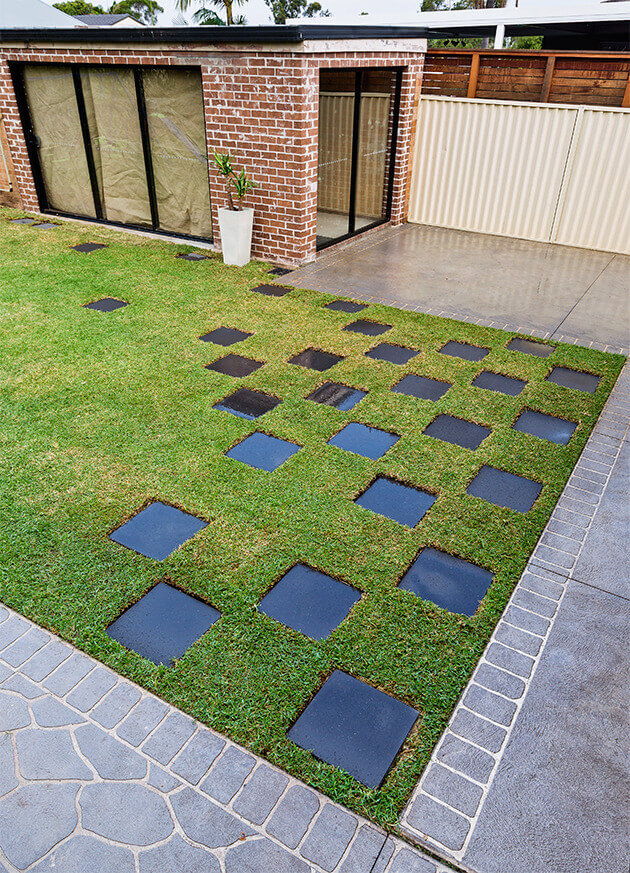
1. Soil preparation
Time frame: about 1 day/50 sq. m, with 2 people involved in the project.
You will need to make sure that the soil is well loosened before you consider laying the turf. Many homeowners who approach the DYI project of laying their own lawn choose to hire a rotavator, in order to aerate the soil easier and more efficiently. This will typically cost you about £35 per day of hiring. However, you can also go the traditional route, and rotavate the soil by hand, with a rake.
Then, you will need to check your soil for fertility, which involves measuring the pH of the soil and analysing its type. Clay-based soil should be thoroughly mixed with sand beforehand, while sandier soil types will usually require some organic matter to be thrown into the mix.
2. Weed removal and fertilization
Remove any weeds and debris, such as rocks, roots, clods, and stones, from the surface where you plan on laying the turf. Screen it thoroughly, to make sure you’ve taken care of all obstacles, and don’t forget to fork the soil properly and then level it, once you’re done. Levelling it can be as easy as walking over the area in question with weight on your feet.
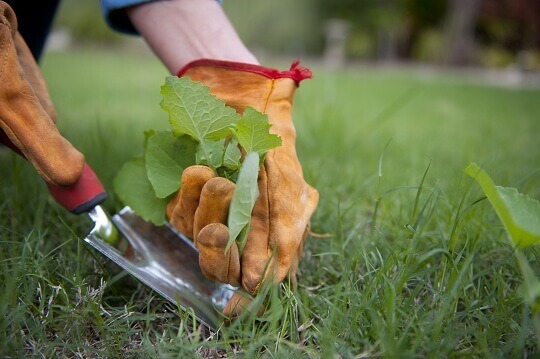
Add granular fertilizer to the soil, by sprinkling it over and then watering the soil. It’s important to select the appropriate type of fertilizer, which matches the soil’s pH levels, so make sure to consult with a professional before buying the fertilizing substances. Should the pH index be lower than 6, add lime to the mix. Also, if the soil is not fertile at all, work the fertilizer into it down to a depth of 10 to 15 centimetres.
3. Topsoil preparation
Time frame: about 1 day/50 sq. m, with 2 people involved in the project
Prepare the topsoil, with all the logistic details that this involves in mind. You will usually receive the top soil in large bags, which are best hauled over the fence to your garden with the aid of a truck. Make sure your supplier is aware of your needs and handles them accordingly. In order to disperse the topsoil you will also need a wheelbarrow. We recommend that you start at the farthest end of your garden.
4. Topsoil distribution
Be smart about dispersing the topsoil. The easiest way to do this is to simply let the topsoil fall out of a bag, which you slit on-site. To this end, remember not to stack several bags on top of each other in the wheelbarrow, as this will make the topsoil far more difficult to operate with.
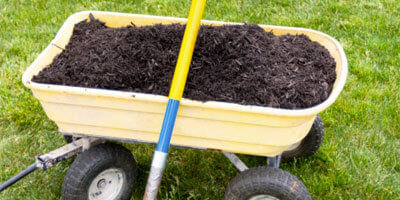
Disperse the topsoil evenly, but do also bear in mind the particularities of your garden’s soil. Usually, a 9-inch layer of topsoil will yield good results. In time, the topsoil will compact. At the same time, be aware of the fact that certain spots in your garden are probably less fertile than others – it pays to be very well acquainted with the surface you’re working, so you will know which areas need more topsoil than others.
5. Levelling the topsoil
You will need a couple of very basic tools for this stage: for instance, you can level the topsoil by rolling out a simple piece of timber over the entire area. Then, once the soil has become compact enough for the turf, level and compact it some more, by jumping up and down the whole of the garden. Ideally, if you do use topsoil, it should be left to compact further on its own, for about a week afterwards.
6. Laying the turf: Where to start
Time frame: about 1 hour/25 sq. m, with 2 people involved in the project
Ideally, you should have at least two people unrolling the turf, because the rolls can be quite heavy and bulky, which will make them difficult to manipulate. One person needs to grab a hold of the top part of the roll and make sure they’re keeping it in place, while the other person slowly unrolls it.
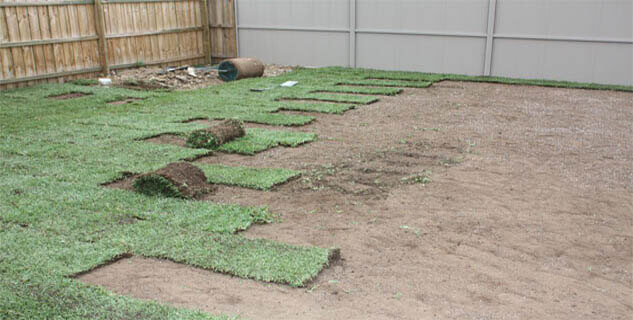
7. The first two rows of turf
The very first two rows of turf will set the tone of the actual unrolling stage. It’s important to have them closely follow the slopes of the land, because you don’t want any gaps. If your garden is sloped or has some hills and valleys which cannot be levelled, make sure you’re working the soil properly. The first row should be laid against a straight edge, while the second one should be pushed as close to the first one as possible.
8. Maximizing soil-turf contact
It’s important to make sure that all the turf comes in close contact with the soil. As such, it’s a great idea to lightly press down on the rolled-out grass carpeting. However, excessive pressure can be highly damaging, so make sure you’re using a plank or some carpeting, in order to avoid stepping on the freshly laid lawn. In this sense, rollers are strictly prohibited, unless you want to damage your new lawn beyond repair. You can also try using a rake, which you hold upright and with which you press down on the turf.
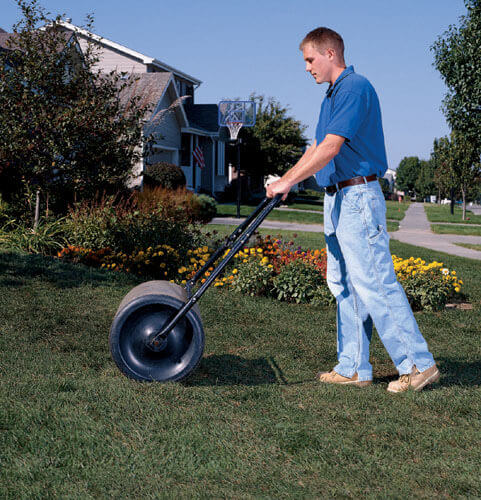
9. Trimming and watering
Ideally, most turf cutting will occur after all the rolls have been positioned on the ground, right at the end of the project. However, in some situations it may be better to do some cutting and trimming while you’re working with the rolls of turf, in order to minimize kneeling on freshly rolled-out turf. Tuck in the edges of the turves to avoid gaps, and then proceed to trimming them. You can use a straight-edge board and a half-moon cutting tool for efficient trimming after you’ve laid all the turf rolls.
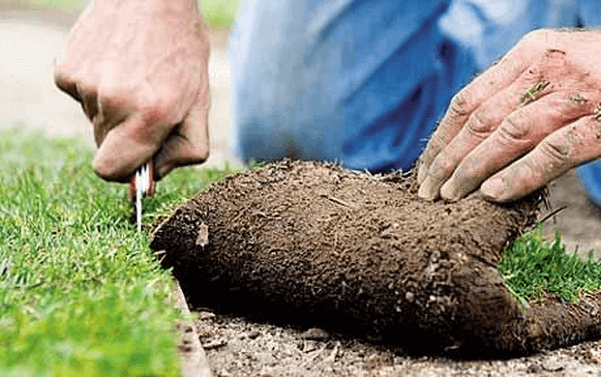
Unless you’re laying your lawn in the rainy season (and especially in summer), it’s very important to water the lawn thoroughly once it’s been laid out. Install a sprinkler system to this end, if possible, or water it on a regular basis for the first two weeks. This period is crucial, as your new soil is still sensitive to disease and it needs to establish itself.
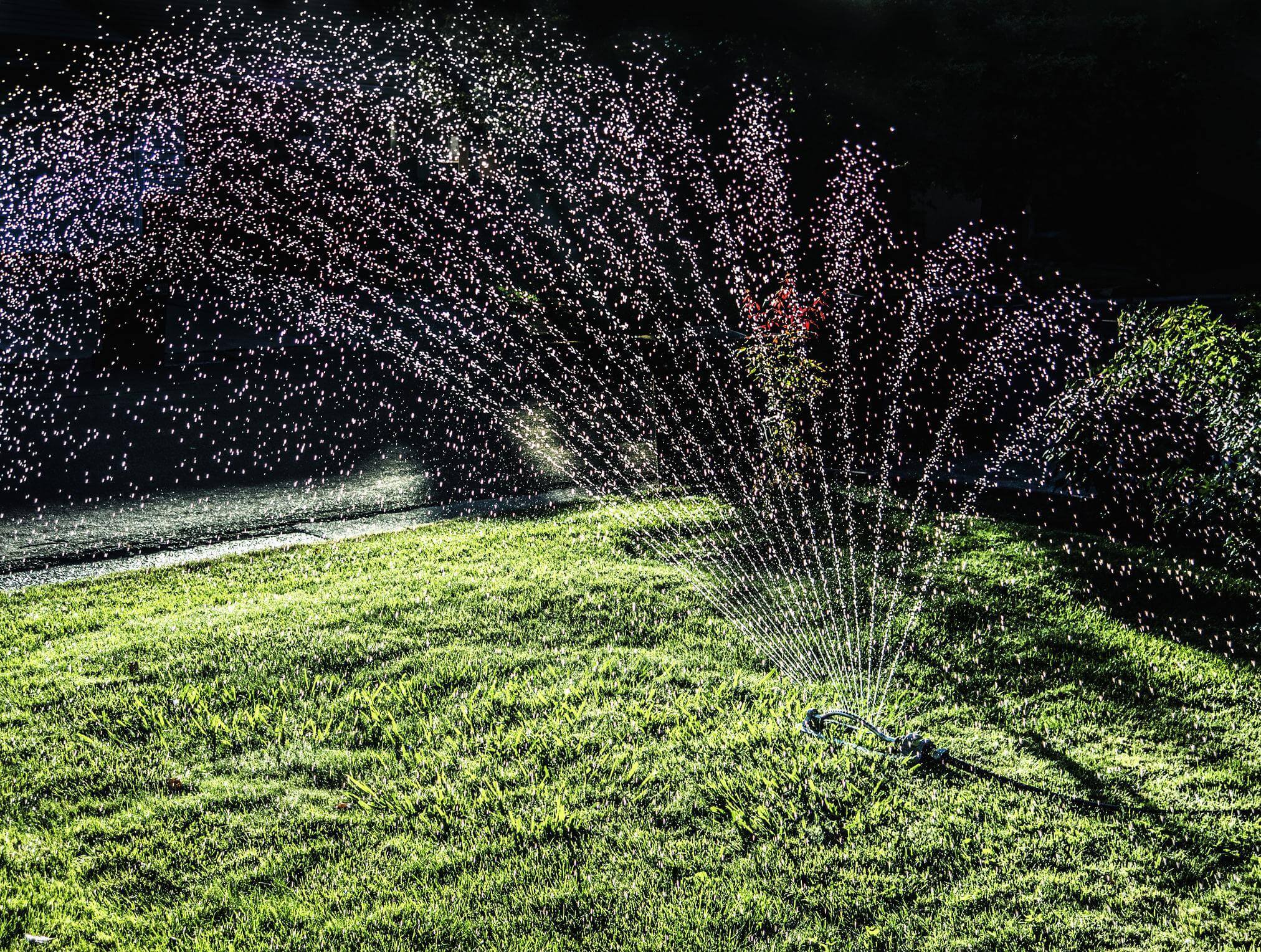
10. Initial aftercare
Once you’re done, sprinkle a few handfuls of soil on top of your new lawn, as to keep the turf even more moist. You will want to encourage it to grow as much as possible, and that’s why autumn is the best time to lay a lawn. During mild winters, grass will begin to grow at a slow pace. It’s often recommended to give it occasional light trims, in order to stimulate the turf to grow and to establish itself.
What’s next? 3 essential lawn aftercare tips
1) Don’t walk on your fresh lawn
A new lawn will need some time to properly attach itself to the soil underneath it. As such, while you may lightly tread on it from day one after you’ve unrolled the turves, it’s best to keep off the new lawn for the first 2 or 3 weeks.
2) Give your new lawn regular trims
It’s not a good idea to trim new turf right away – and it’s most probably not necessary at all to do this, either. However, once the grass has grown to at least 3 inches, it’s time for its first trim. This will help expose the roots of the grass to as much sunlight and air as it can store, thereby stimulating growth. At the same time, remember not to trim more than one third of the blades’ height and also consider applying fertilizer after the first cut.
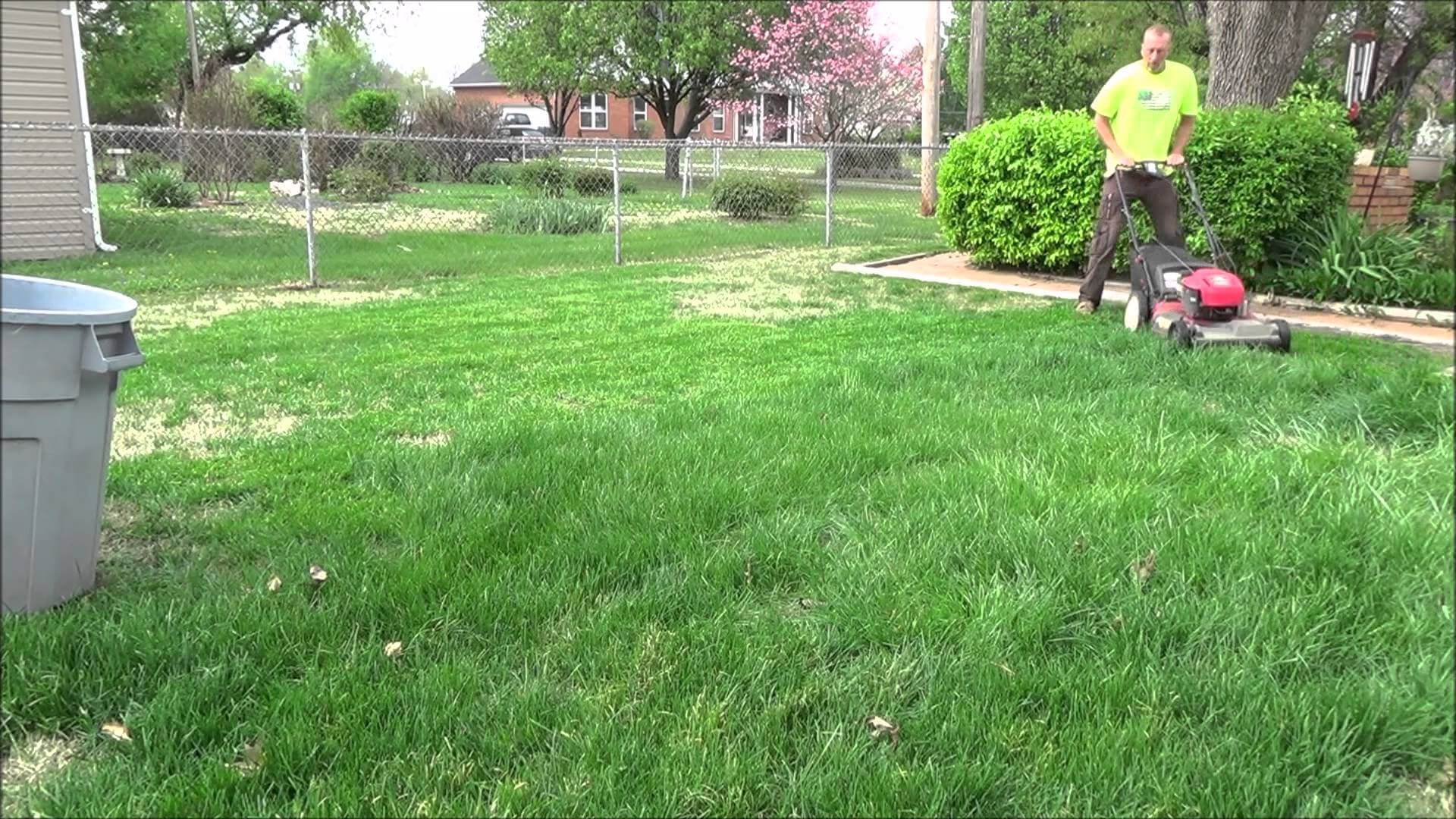
3) Help the grass establish itself
The grass root systems of your new lawn are still sensitive and delicate, which makes the grass susceptible to disease, as well as to excessive stress. The best way to ward these off is to make sure your new lawn is getting enough water.
